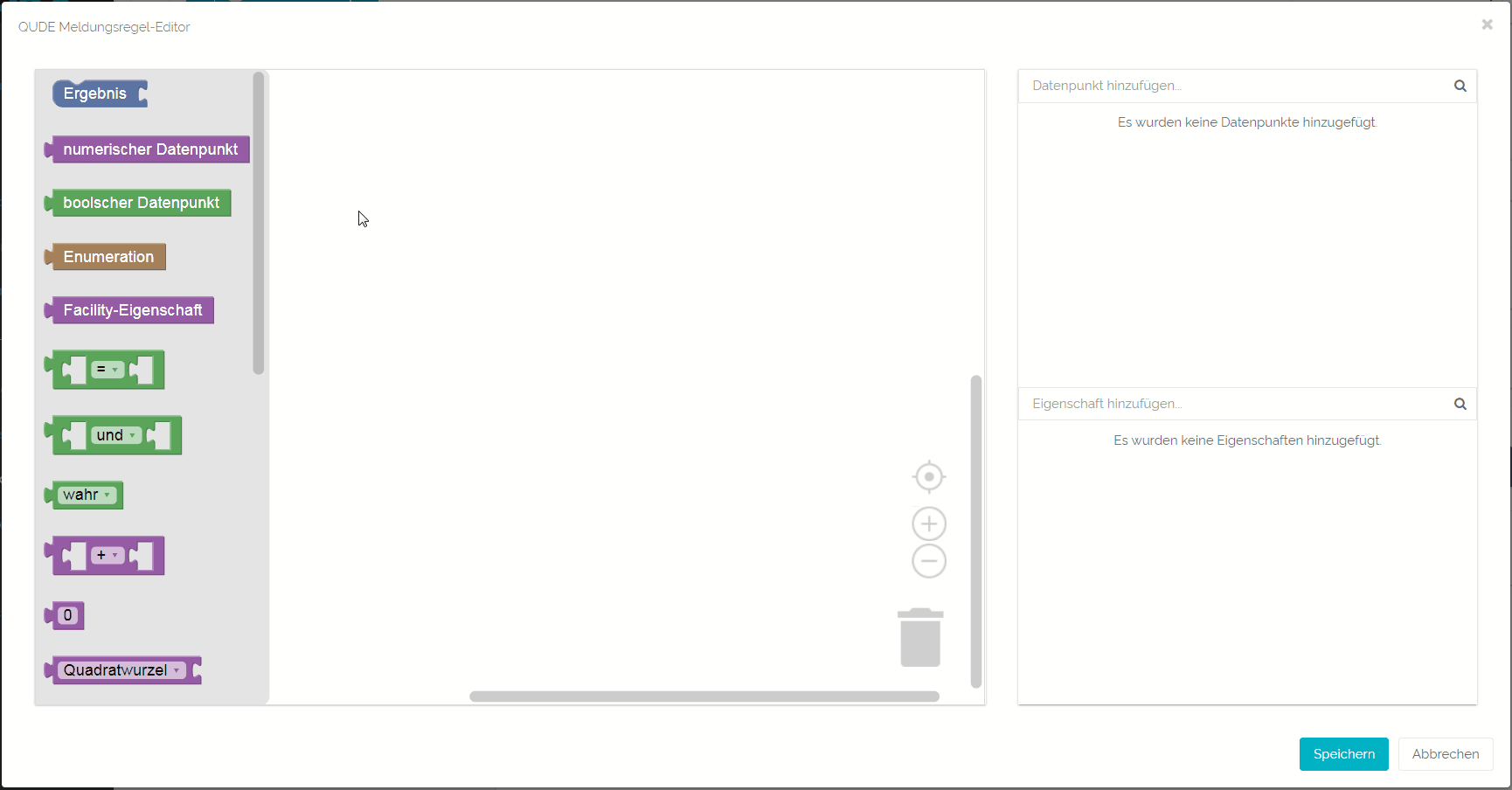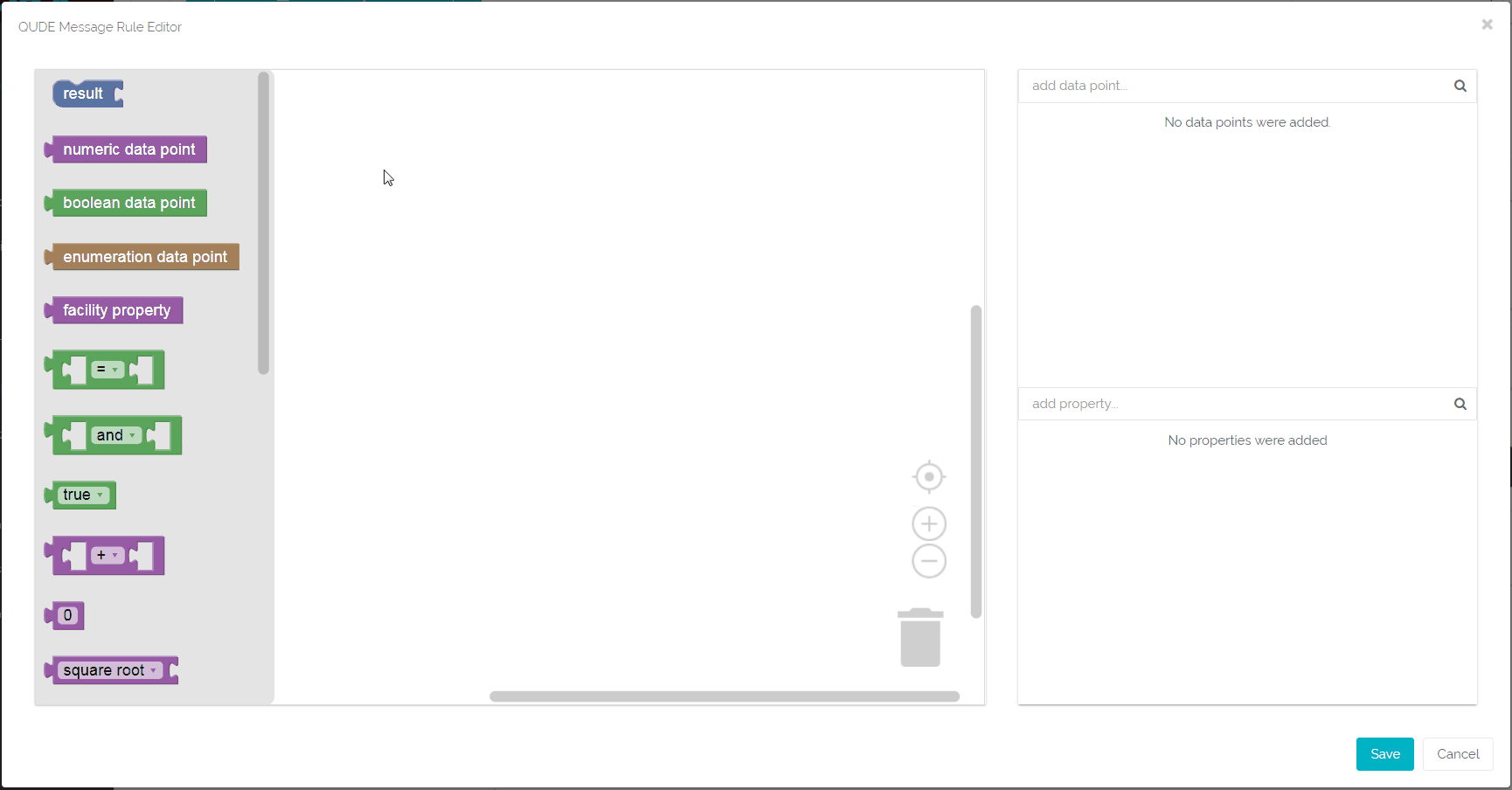| Sv translation | |||||
|---|---|---|---|---|---|
| |||||
Meldungsregeln legen fest, unter welchen Umständen Meldungen in QBRX erzeugt werden. In diesem Beitrag zeigen wir Ihnen exemplarisch anhand von zwei Beispielen, wie Meldungsregeln erstellt werden können.
Beispiel 1: Die Außentemperatur entspricht 0°C oder wenigerIm ersten Beispiel erstellen wir eine Meldungsregel, die dafür sorgt, dass immer dann eine Meldung generiert wird wenn die Außentemperatur 0°C oder weniger entspricht. Der Gefrierpunkt ist in vielen Situationen ein relevanter Faktor. Schritt-für-Schritt Anleitung
Beispiel 2: Die Lüftungsanlage ist außerhalb der Öffnungszeiten eingeschaltetIm zweiten Beispiel soll immer dann eine Meldung erzeugt werden, wenn die Lüftungsanlage eingeschaltet ist, obwohl die zugehörige Filiale gechlossen ist. Die Meldungsregel kann dabei helfen, Störungen an der Anlage ausfindig zu machen. Der Datenpunkt, der den Aktivitätsstatus wiedergibt, kann außerdem mit einer Vielzahl an anderen Datenpunkten ausgetauscht werden, falls man eine Warnung bezüglich anderer zeitabhängiger Annomalien erhalten möchte. |
| Sv translation | ||
|---|---|---|
| ||
Message rules define, if and when messages are generated. You can describe those rules with the help of QUDE (QBRX universal data point editor) QUDE is a versatile tool for the creation of various evaluation rules. There are almost no restriction for the creation of new rules. In this article, we'll be talking about the creation of a new message rule in QUDE. As an example, we define a rule that warns us, once the outside temperature of your facility is 0°C (32°F) or below. Opening QUDE Before working with QUDE, you have to open the tool. Go to the message board of your designated facility and select the gear wheel-button on the right side. You are send to the message rule board. Create a new message rule by clicking on the plus-button and/or choose a message rule and click on the puzzle-button. Example 1: simple message rules without conditionsFor this example, we create a message rule that generates a new message whenever the outdoor temperature of your facility is 0°C (32°F) or below. The freezing point is relevant for various situations and the evaluation rule only consists of a few bricks. You'll need four bricks: one evaluation, one for comparisons, one for numeric data points and a constant.
From now on, a message is generated whenever the outdoor temperature reaches 0°C and decreases further on. You can change these settings anytime.
Example 2: message rules with conditionsNow, we create similar message rules for the same example. However, this time we'll be using more parameters and a condintion brick. The new parameters are "true" and "false" for rule 1 and "1" and "2" for rule 2. We use them to define even more accurately if a certain situation occured. "1" and "true" always confirm such an occurence and trigger the creation of a fitting message. "0" and "false" confirm, that nothing predefined occured and therefore won't trigger a message. You'll need six bricksfor both rules: two result bricks, one brick for conitions with exceptions, one for comparisons, one for numeric data points and a constant.
Select "Save" in the lower right corner to save your changes. From now on, a message is generated whenever the outdoor temperature reaches 0°C and decreases further on. You can change these settings anytime. |








